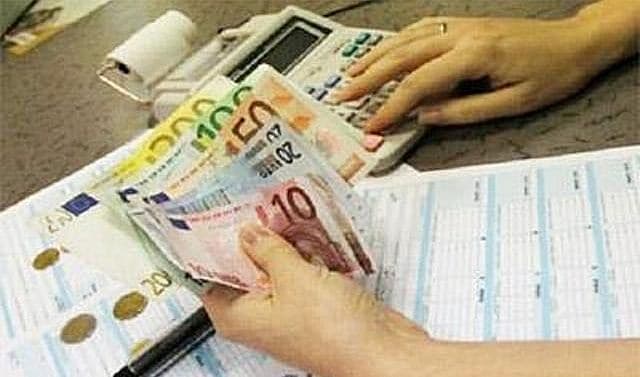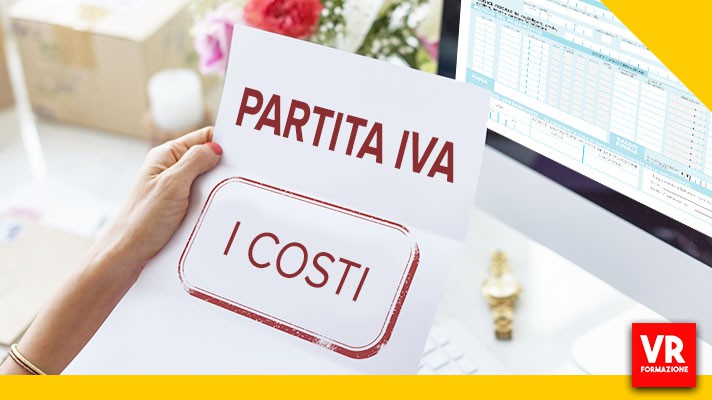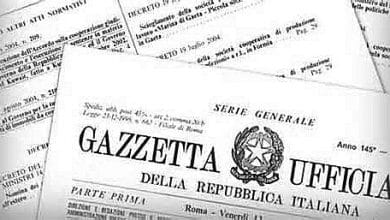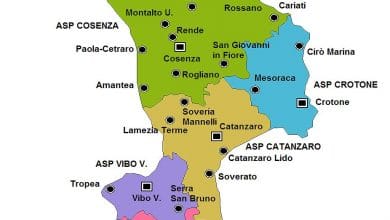
To calculate the net income of 1,500 euros, reference must be made to the total income for an entire year and a higher gross income from 23 to 43% may be necessary, to which social security contributions must be added.
 When it comes to earnings for VAT numbers one must be very careful not to confuse turnover with net revenue. In fact, the sum indicated in the individual invoices does not represent the amount that the worker will keep in his current account and then dispose of as he sees fit.
When it comes to earnings for VAT numbers one must be very careful not to confuse turnover with net revenue. In fact, the sum indicated in the individual invoices does not represent the amount that the worker will keep in his current account and then dispose of as he sees fit.
Indeed there are two items of expense to be taken into account. The first is that relating to taxes, with respect to which the current tax regulatory system provides for a double possibility: that of adhering to the ordinary regime with taxes to be paid in proportion to the income generated, and that of the flat-rate regime, on which instead a fixed substitute tax. The second cost item is that of social security contributions, whether they relate to INPS or to another social security fund.
- Earnings 1500 net per month with VAT, what is the net
- Operation of the net calculation for the VAT number in 2021
First of all, the first thing that has a profound effect on the earnings of a VAT number applied tax. Those who adhere to the ordinary regime are subject to a variable taxation based on their income. More precisely, the picture from the highest to the lowest bracket is as follows:
- over 75,000 euros (taxable income), 43% (rate), 25,420 + 43% on the part over 75,000 euros (tax due on intermediate income included in the brackets)
- from 55,001 to 75,000 euros (taxable income), 41% (rate), 17,220 + 41% on the part over 55,000 euros (tax due on intermediate income included in the brackets)
- from 28,001 to 55,000 euros (taxable income), 38% (rate), 6,960 + 38% on the part over 28,000 euros (tax due on intermediate income included in the brackets)
- from 15,001 to 28,000 euros (taxable income), 27% (rate), 3,450 + 27% on the part over 15,000 euros (tax due on intermediate income included in the brackets)
- up to 15,000 euros (taxable income), 23% (rate), 23% of income (tax due on intermediate income included in the brackets)
To calculate the net income of 1,500 euros, it is therefore necessary to refer to the total income for an entire year and a higher gross income from 23 to 43% may be necessary, to which social security contributions must be added.
 With the flat rate scheme, the rate applied is instead the same for 15%, provided that the income earned is less than the ceiling of 65,000 euros. Social security contributions are deducted from the determined income - INPS artisans and traders, contributions to separate management, professional pension funds - including those paid on behalf of family collaborators who are fiscally dependent or not dependent, if the owner of a family business has not exercised the right to retaliate against the collaborators themselves.
With the flat rate scheme, the rate applied is instead the same for 15%, provided that the income earned is less than the ceiling of 65,000 euros. Social security contributions are deducted from the determined income - INPS artisans and traders, contributions to separate management, professional pension funds - including those paid on behalf of family collaborators who are fiscally dependent or not dependent, if the owner of a family business has not exercised the right to retaliate against the collaborators themselves.
Taxpayers who are natural persons carrying on business, arts or professions can join the flat rate if in the previous year they achieved revenues or have received compensation, adjusted per year, not exceeding 65,000 euros; if they have incurred expenses for a total amount not exceeding 20,000 euros gross for ancillary work, for employment and for collaborations.
The flat-rate regime is characterized by the fact that income is determined using the cash criterion for both businesses and professionals. The income is calculated on a flat-rate basis by applying profitability coefficients divided by type of activity. A substitute tax of 5% or 15% is applied to the income thus determined, instead of the ordinary progressive Irpef rates.
In the case of adherence to the flat rate, for the purpose of accessing the scheme, the reintroduction of the spending limit with reference to employees; the reinstatement of the exclusion from the scheme for those who receive an income from employment or equivalent work exceeding €30,000; a reward system for those who issue electronic invoices; the competition of the flat-rate income for the purposes of calculating deductions and deductions.
Chiara Compagnucci for BusinessOnLine –
Note:
With the flat rate scheme, in which it is easier to carry out the tax calculation, everything is processed in a flat-rate manner, on the basis of fixed percentages established for each ATECO code. In the flat rate scheme, it is not possible to download expenses directly. These are, in fact, calculated on a fixed basis, according to a percentage (o profitability coefficient) established for each sector or economic activity. Simplifying: GROSS INCOME – PERC. FIX EXPENSES – CONTRIBUTIONS PAID DURING THE SAME PERIOD = TAXABLE INCOME. Once your taxable income has been established, you can proceed with the calculation of taxes and net income. The rate drops to 5% for the first five years of activity (that is, for the so-called flat-rate start-up scheme).
With the ordinary regime the tax calculation And net income it is much more complex: first of all, you need to enter the expenses incurred (if deductible) item by item. Subsequently, the different taxes will have to be processed, with rates that vary according to the income bracket.
For "ordinary" taxpayers, therefore, the advisable solution to find out the amount to be paid is to contact a financial advisor or subscribe to an online service of management of the VAT number which allows you to monitor turnover and evaluate future expenses. The tax calculation it is not the only evaluation to be made in order to know one's own net income why the taxes are not the only management costs to be incurred: there are also i social security contributions which vary according to the activity, with rates established by the relevant Social Security Fund
_________________________________
Example (flat rate): Collecting €2,000 from an invoice, what is the net profit?
Revenue (collection) invoice: 2.000 €
Profitability coefficient (the profitability coefficient is a term that belongs to the flat-rate scheme. It represents the percentage to be considered, on the total turnover, to calculate the taxable income. Each ATECO code has a different profitability coefficient. For example, for those who carry out professional activities it is from 78%) In the example Laws: 67%
Taxable income (Taxable income is the basis on which taxes and contributions to be paid are calculated. In the flat-rate scheme, the taxable income is obtained by applying the profitability coefficient to the revenues achieved. The substitute tax and contributions are calculated on the taxable income thus obtained.) In the example Laws (revenue x profitability ratio) = €2,000 x 67% = 1.340 €
Substitutive tax (the tax envisaged for all taxpayers subject to the Flat Rate Regime. It is a single tax that replaces all the others paid in ordinary regimes, it has a rate of 5% for startups and a rate of 15% for newly created companies) In the example Laws to 5% (taxable income x 5%) = 1,340 x 5% = 67 €
Contributions (Contributions, as the name suggests, are a type of tax that is compulsorily required of the taxpayer by the Public Administration. Therefore the contributions are compulsory withdrawals of wealth taken by the State or by the Public Administration by virtue of their taxing power). In the example Laws (taxable income x 24%) = 1,340 x 24% = 321,6 €
Total = taxes + contributions = 67 + 321,6 = 388,6 €
Net income = Revenue (Fees for the sale of goods or the provision of services, which characterize the business activity). In the example Laws – (taxes + contributions) = 2,000 – 388.6 = 1611.4
Furthermore, it should be taken into account that from the net income calculated in this way, to obtain what has actually been earned from the service, any expenses that have actually been incurred to complete the activity for which the invoice has been invoiced will also have to be subtracted.
Example of Programmers on a flat rate: cannual net alcohol
Now let's see an example of calculating net profit VAT developer on an annual basis, the mechanism will be the same but let's see how it applies with a higher amount of receipts.
Revenues (collections) invoices: 30.000 €
Profitability coefficient: 67%
Income. taxable (revenue x profitability ratio) = 30,000 x 67% = 20.100 €
Taxthe replacement for 5% ( taxable income x 5%) = 20,100 x 5% = 1.005 €
As for i contributions, we can see that the taxable income of €20,100 exceeds the threshold of minimal income fixed at 15.953 € therefore, in this case you will have to pay, in addition to the fixed fee of €3,850, also the 24% of the surplus.
Fixed contributions = 3.850 €
Contributions on the surplus: (taxable income - minimal income x24%) = 20,100 – 15,953 = 4,147 x 24% = 995,28 €
Total contributions = 3,850 + 995.28= 4.845,28 €
Related news: ISTAT informs us: ATECO code for ISF
The documents reported represent opinions, interpretations and reconstructions, even subjective ones and not necessarily shared by the editorial staff. Therefore, the responsibility of the statements lies with the author and/or whoever has provided us with the content. Our intention is to provide useful information for scientific representatives and to disseminate news of public interest. Naturally we invite readers to always deepen the subject matter, to consult more sources and we leave each of them the freedom of interpretation. The material found on the net, where the copyright wording and the rights of use have not already been declared on the site, has been deemed to be in the public domain in good faith. Some texts quoted or images included in this site are taken from the internet and, therefore, considered to be in the public domain; if their publication violates any copyright, please notify us via e-mail to provide for the consequent removal or modification.





